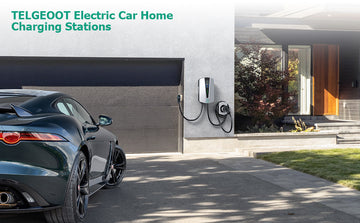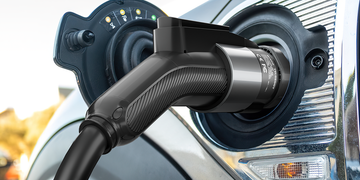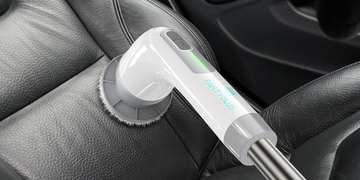Electric Vehicle (EV) charging levels refer to the different power levels at which electric vehicles can be charged. There are three main levels, each with its own charging speed and application. Here's an overview:
There are three EV charging levels: Level 1, Level 2, and Level 3. In this article, we will explain how EVs charge, their limitations, different technical specifications for EV charging levels, and detail different aspects of the subject. This will give you enough information to help you determine the best EV charging solution for you.
EV charging can be done with AC (alternating current) or DC (direct current) power. Level 1 and Level 2 EV charging uses AC power, while Level 3 charging exclusively uses DC power at high currents, which is why it is also known as DC Fast Charging (DCFC).
AC charging requires the EV charger to be connected to a 230VAC single-phase or 400VAC three-phase connection; the charging current varies according to the charging capacity of the charger and the EV model. During AC charging, the AC to DC conversion occurs directly on the onboard charger installed at the EV.
DC charging does not use the onboard charger that limits the maximum current, which is why EVs can charge at a much faster speed. The AC to DC conversion during DC charging occurs at the charging station, allowing a high current to be delivered to the EV and rapidly charge the battery.
Are There Limitations for AC and DC Charging?
Charging speed is not only limited by the AC and DC power rate of the charger, but also by the charging capacity of each particular EV. This means that charging an EV with a high-capacity AC charger does not mean the best Level 2 charging time will be provided as the maximum charging capacity is also limited by the EV manufacturer.
Charging restrictions for Level 1, Level 2, and Level 3 electric vehicles in the United States
There are no specific charging restrictions based on charging levels (Level 1, Level 2, Level 3) for electric vehicles in the United States. Charging levels are standardized, and electric vehicles are designed to be compatible with these levels.

However, it's essential to note the following considerations:
Vehicle Compatibility: Different electric vehicles may have varying charging capabilities. While most electric vehicles are compatible with Level 1 (120V) and Level 2 (240V) charging, not all may support Level 3 (DC fast charging). It's crucial to check the specifications of your specific electric vehicle model.
Charging Connector Types: Level 1 and Level 2 chargers typically use the SAE J1772 connector in the U.S., while Level 3 chargers commonly use either the CCS (Combined Charging System) or CHAdeMO connectors. Some electric vehicles may support multiple connector types, but it's essential to ensure compatibility.
Charging Network Access: Level 1 and Level 2 chargers are often available at homes, workplaces, and public charging stations. Level 3 (DC fast charging) is typically found at public fast-charging stations along highways. Access to certain charging networks may require memberships or specific payment methods.
I can provide general information on charging for popular electric vehicles in the United States. Keep in mind that charging infrastructure, capabilities, and restrictions may have changed since then. For the most accurate and up-to-date information, please refer to the official documentation provided by the electric vehicle manufacturers or contact their customer support. Here is some general information:
Tesla:
Charging Network: Tesla Supercharger network is exclusive to Tesla vehicles.
Charging Speed: Tesla vehicles support fast charging through Superchargers, offering varying speeds depending on the model.
Charging Compatibility: Tesla vehicles are primarily compatible with Tesla Superchargers, but adapters may be available for other charging networks.
Chevrolet Bolt EV:
Charging Speed: Supports Level 2 charging (240V) and DC fast charging.
Charging Compatibility: Uses the CCS (Combined Charging System) for DC fast charging.
Nissan Leaf:
Charging Speed: Supports Level 2 charging and CHAdeMO DC fast charging.
Charging Compatibility: Uses CHAdeMO connectors for DC fast charging.
Ford Mustang Mach-E:
Charging Speed: Supports Level 2 charging (240V) and DC fast charging.
Charging Compatibility: Uses CCS (Combined Charging System) for DC fast charging.
Audi e-tron:
Charging Speed: Supports Level 2 charging (240V) and DC fast charging.
Charging Compatibility: Uses CCS (Combined Charging System) for DC fast charging.
Porsche Taycan:
Charging Speed: Supports Level 2 charging (240V) and ultra-fast charging.
Charging Compatibility: Uses the Porsche 800-volt system for ultra-fast charging.
These details provide a general overview, and it's important to verify the specific charging capabilities and network compatibility for the model and year of the electric vehicle you are interested in.
Final Word: EV Charging Levels Suited for All EV Drivers
The US EV industry features charging options that suit the needs of every EV driver in the country, that go from regular home EV chargers up to DC Fast Charging stations. After learning the basics of EV charging, you can now pick the best EV charger available for you or even decide what your next EV will be considering its charging parameters.





